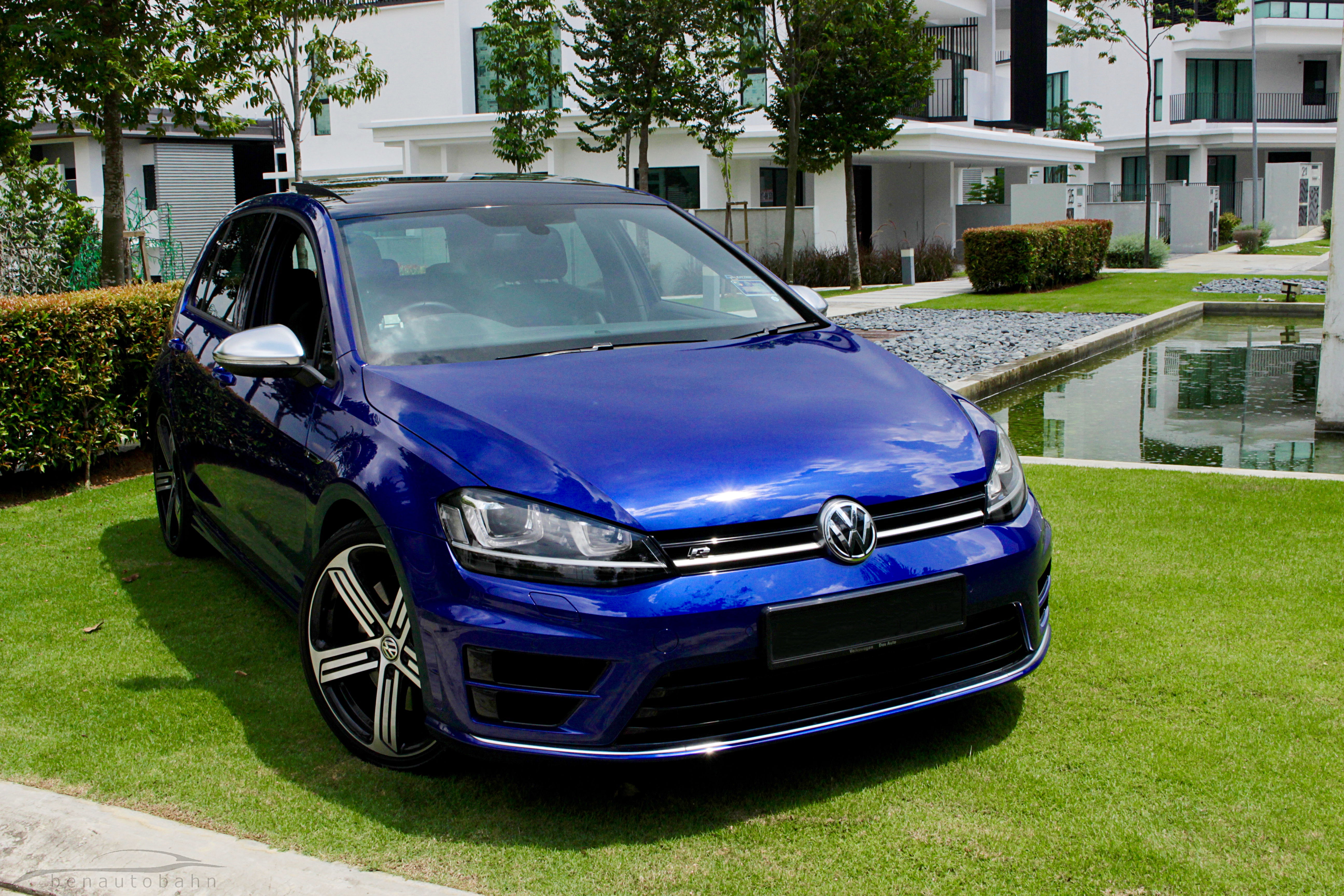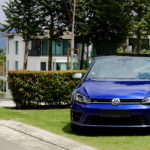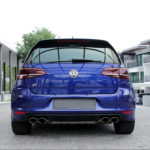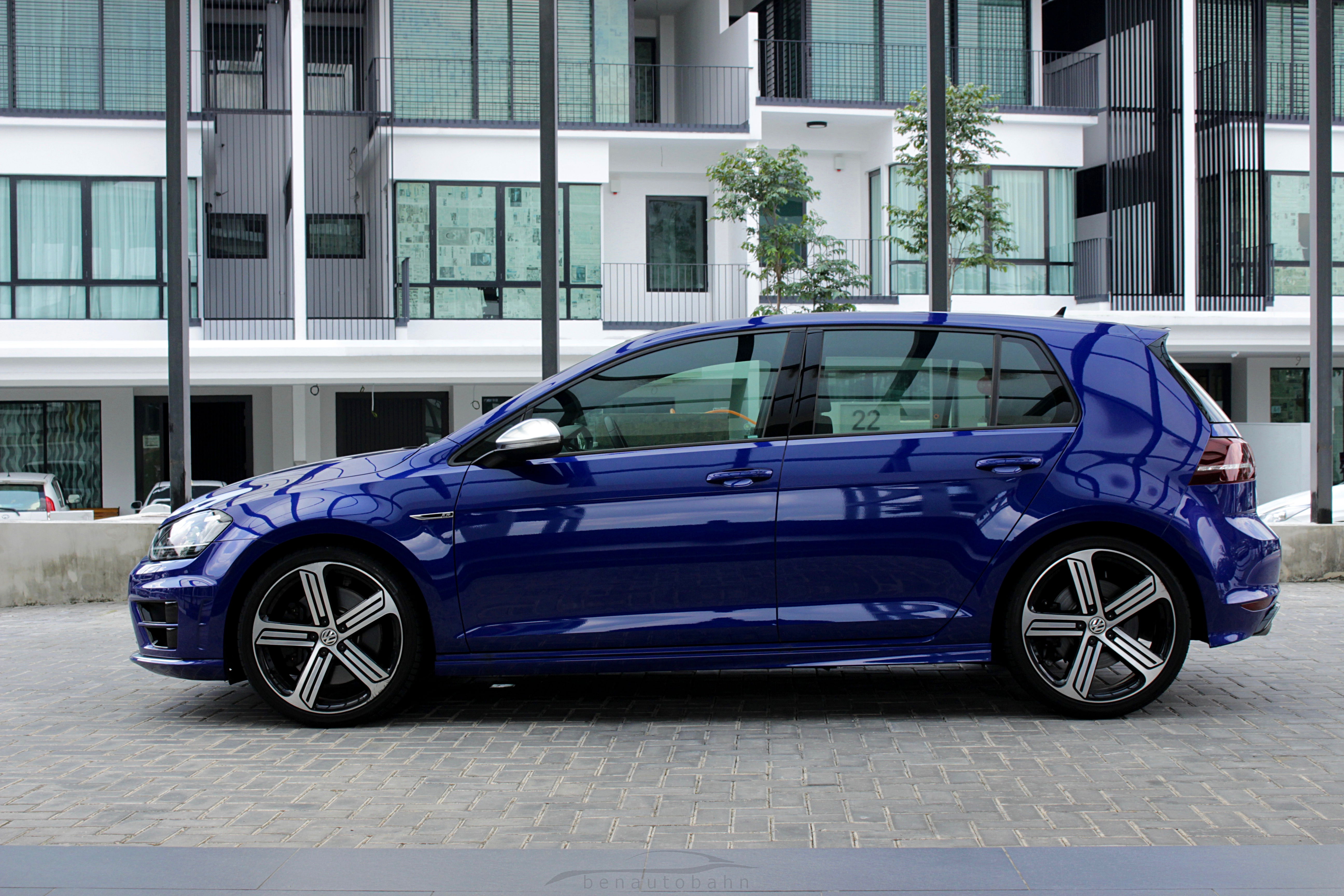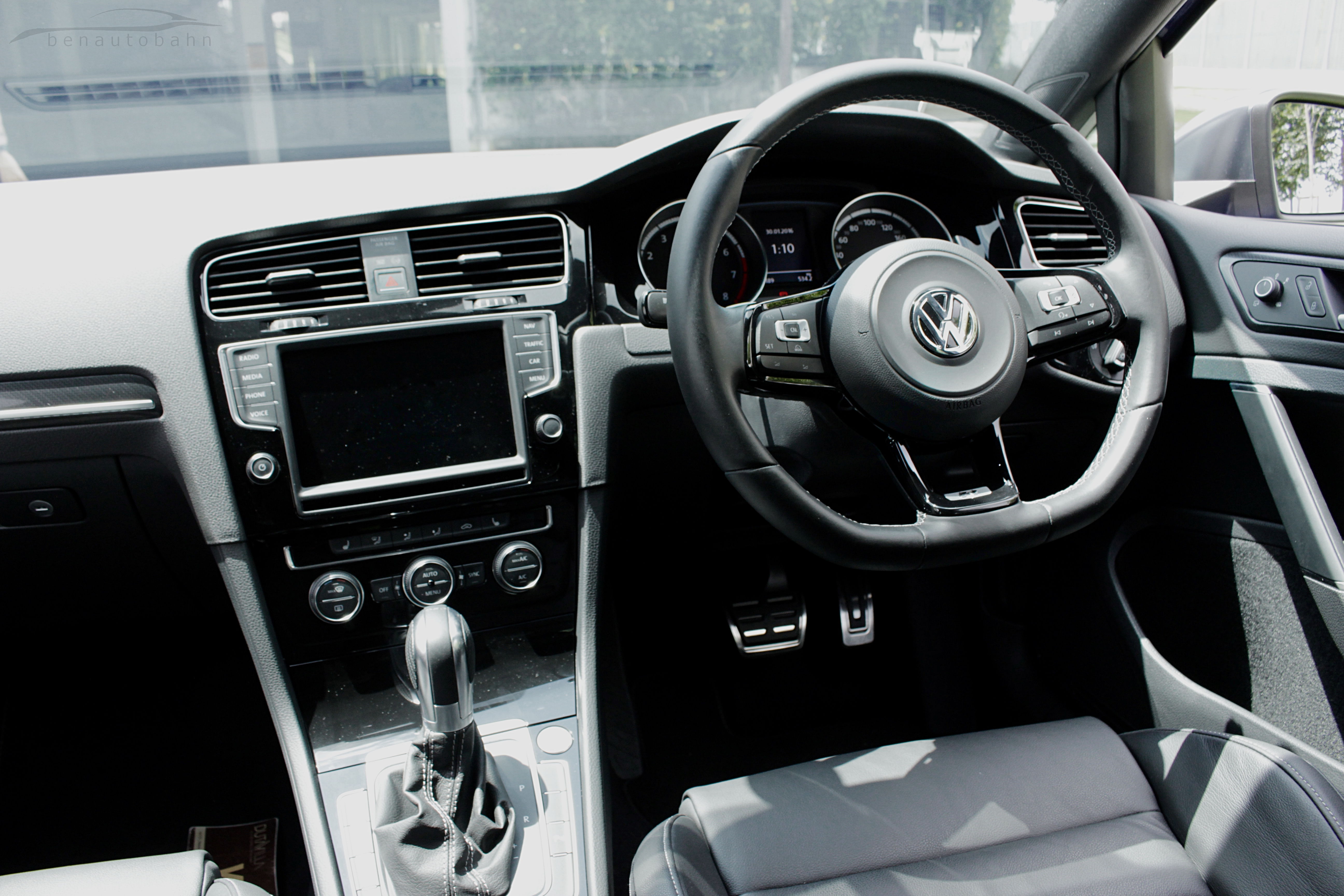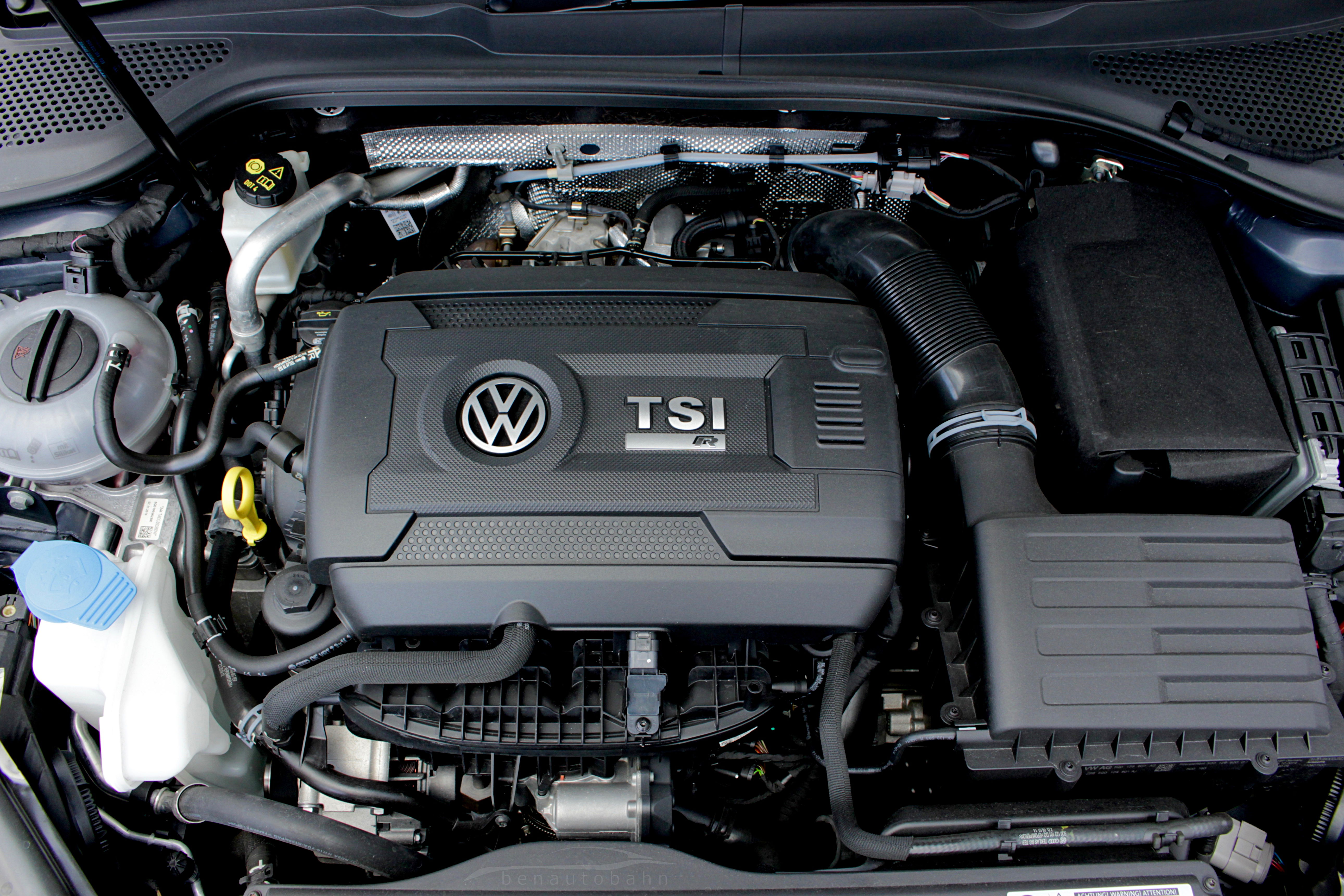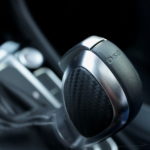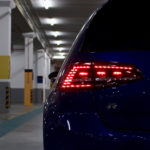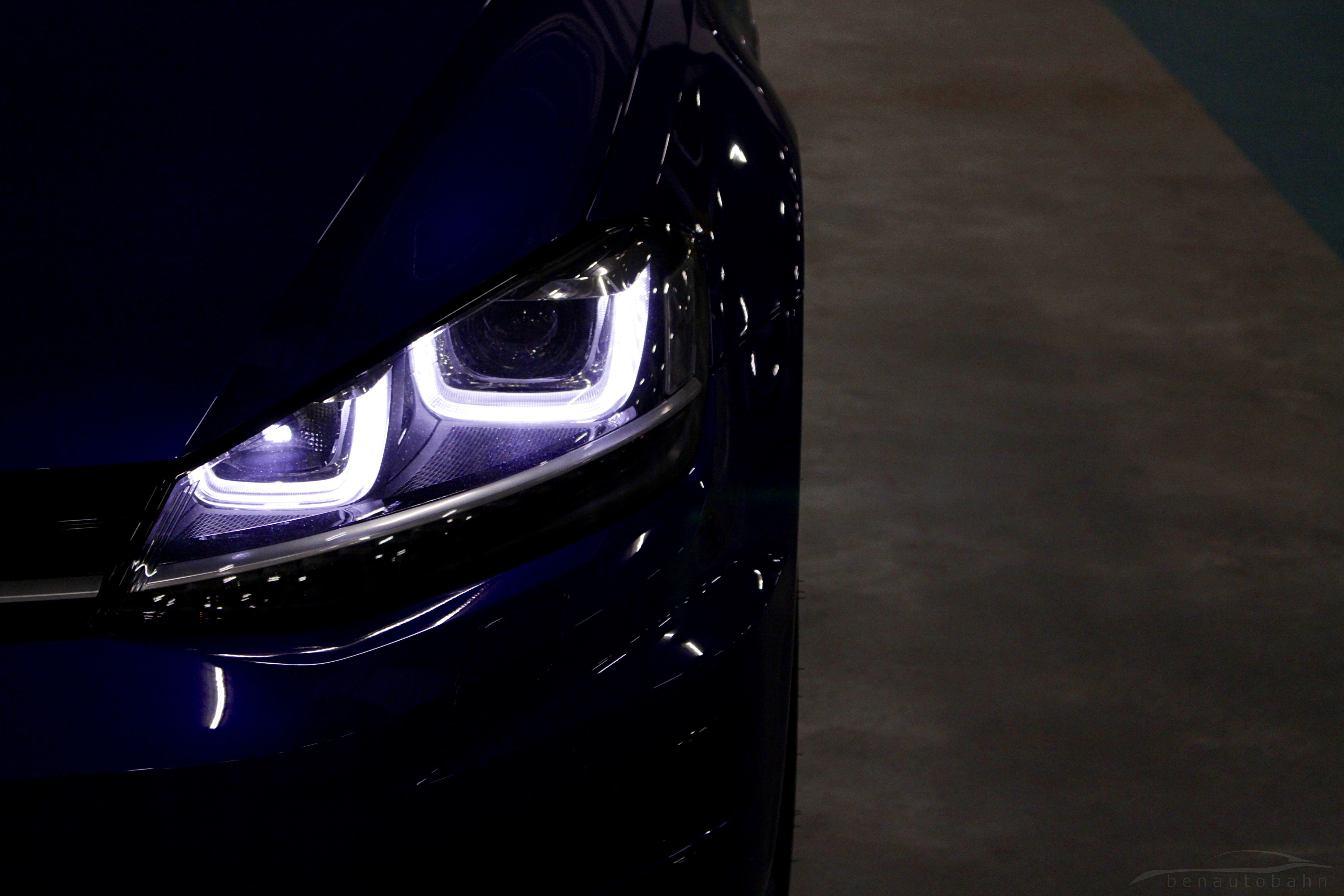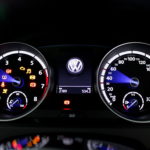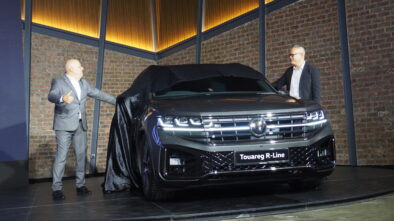R-Rated Golfwagen. The Volkswagen Golf R Review!

A lot can be said about the VW Golf, 7 generations, over 40 years of perfecting the formula to create the perfect family hatchback, it is one of the most iconic nameplates out there. In fact, a while ago when I was on the Internet, I found this:
“ The Golf is really the answer to 99% of all car needs:
Need a..
• A sensible car? Golf TSI
• A spacious car? Golf Sportswagen/variant:
• A fast car? Golf GTI
• A really fast car? Golf R
• A really fast and spacious car? Golf R variant
• A fuel efficient car? Golf TDI Bluemotion
• A fuel efficient and fast car? Golf GTD
• A fuel efficient and fast and spacious car? Golf GTD variant
• An electric car? e-Golf
• A plugin hybrid? Golf GTE
• A car that runs on natural gas? Golf TGI
• A car that can do a muddy field? Golf Alltrack
• Are you 80 years old and need a car to easily get in and out? Golf Sportsvan”
The sheer breadth of models in the Golf family is genuinely amazing, and right now, Ford’s Focus is probably the only car that comes somewhat close, covering about half the breadth of the Golf’s portfolio. Hence, when I got the chance to try out the Golf R, the über Golf, naturally I could not say no.

A bit of back story for the uninitiated, the Golf R is the ultimate expression of driving excitement in the Golf lineup, though it is one of the newer models in the Golf family. The first Golf R came in the form of the Golf R32, back on the Mk4 in 2002. It was the first Golf to have a 3.2 VR6 engine (hence the R32 moniker), 4MOTION all wheel drive, and in the European market, an option for the DSG transmission (the first production car to get it, the DSG is now synonymous to VW’s entire Golf lineup, being featured in most markets on most variants), instead of the 6 speed manual.
It was a revelation for it’s time, but it was already starting to feel dated, since the Mk4 Golf had already been in production in 1998. The Golf R32 Mk5 replaced it in 2005, and looked more modern. Still using the carryover 3.2 VR6 engine and 4MOTION all wheel drive, it was slightly faster than the predecessor, and handled even better, thanks to a revised suspension design.

The Golf R Mk6 took over from the Golf R32 Mk5 in 2009, with a slew of sweeping changes to the Golf R formula. For a start, VW dropped the VR6 engine, for a newer turbocharged 2.0 TSI petrol engine, which took the GTI’s 2.0 TSI engine and uprated it with a bigger turbo, stronger pistons/rods and block, while offering a 6 speed manual or a 6 speed DSG option, with 4MOTION all wheel drive still being standard.
While the Golf R Mk6 wasn’t the first Golf R to be sold officially in Malaysia (the R32 Mk5 was first), however, considering the generous equipment, the Golf R Mk6’s MYR269k price was very reasonable compared to the R32 Mk5’s MYR303k price tag when new, which allowed it to sell in much larger numbers compared to the Golf R32 Mk5.
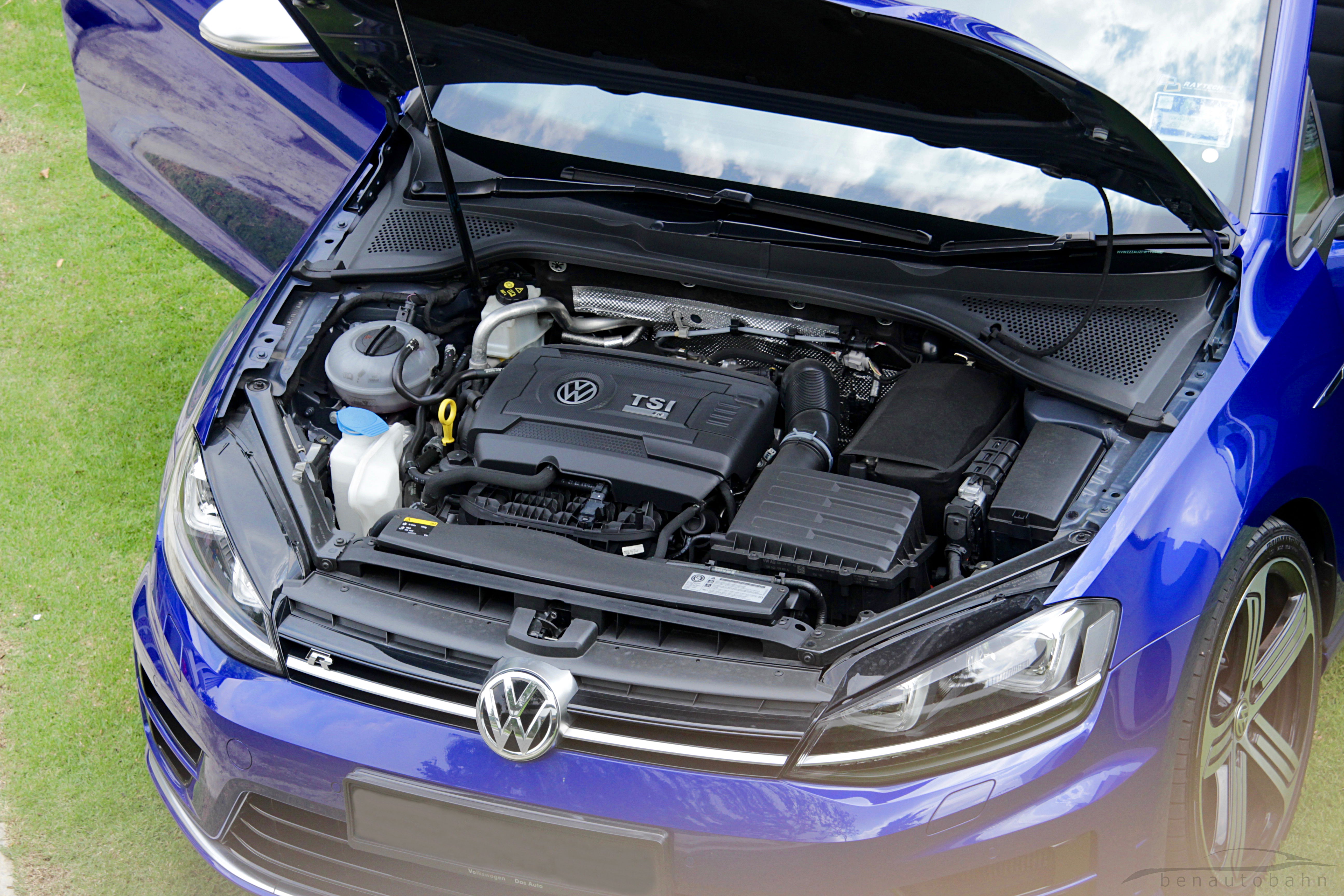
The Golf R Mk7 finally arrived in 2014, and while in terms of physical mechanics, it was mostly similar to the Golf R Mk6, it did have a lot of changes. For a start, the 2.0 TSI engine had been updated to offer nearly 300hp (depending on market), it rode on the all new Modularer Querbaukasten – MQB (Modular Transverse Matrix) platform, which helped it cut on weight, and deliver a better driving experience.
In DSG form, it even offered a sub 5 second 0-100 km/h sprint, which is frankly very impressive for what is essentially a hatchback that is based on a car that people buy for daily use, to send their kids to school and get milk from the shops.

The first thing that is very apparent in this generation of Golf is that visually it is not as different compared to the predecessor Mk6 – which is a bit of a change considering the Mk6 was easily identifiable as being different compared to the Mk5. This generation of Golf is more “evolutionary” than revolutionary, with a more taut design, slimmer front lights, and cleaned up rear light graphics. Visually, the Golf is now more “muscular” and more dynamic, compared to the curvier and less aggressive looking Mk 6 (though that too was a very good-looking car when fitted with the bi-xenon front headlights and LED rear tail lights).
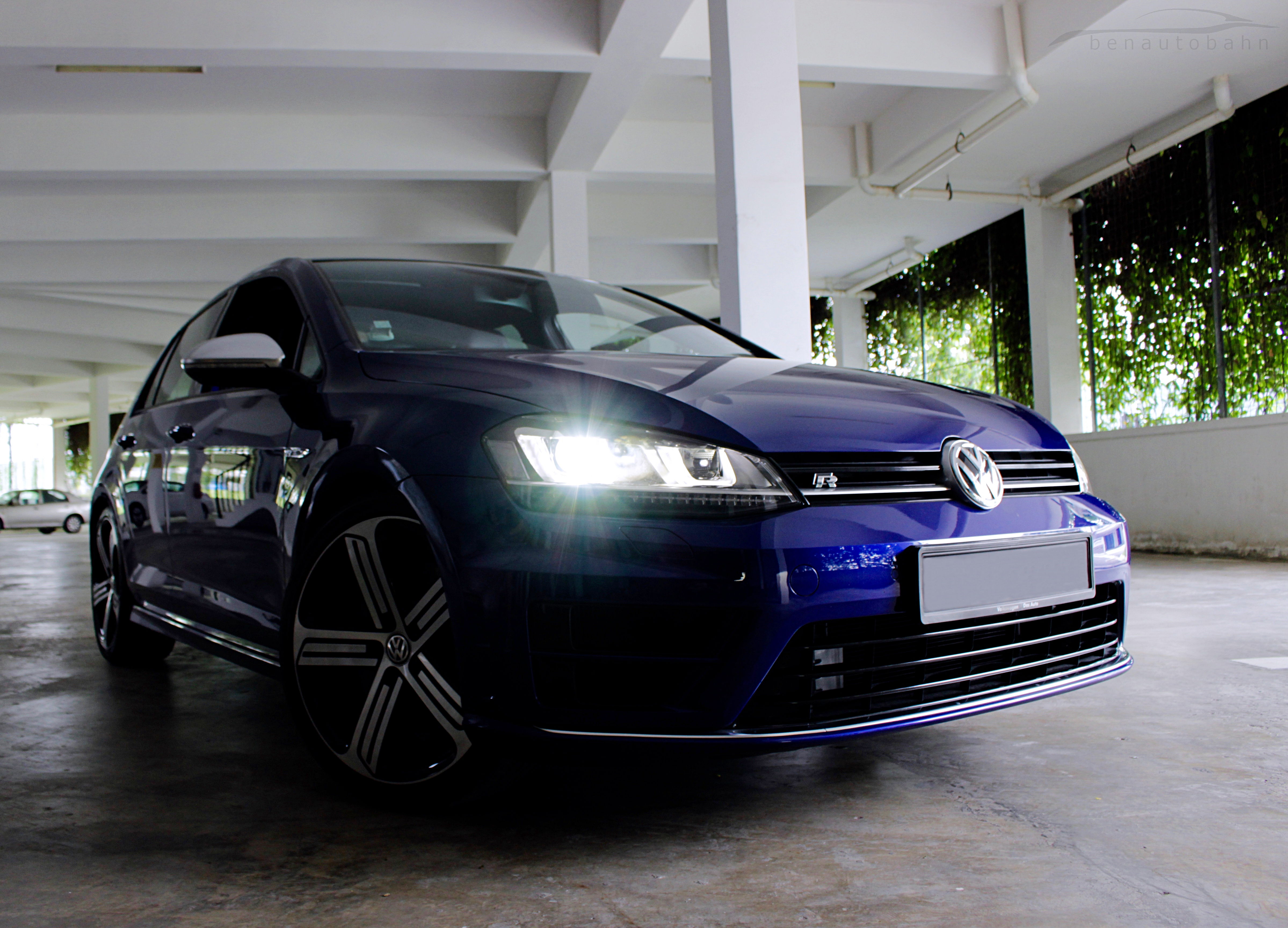
On the Golf R, you get the excellent bi-xenon headlights with adaptive light system, that ensures the headlight beam curves as you drive on a curvy road, Golf R specific all LED rear lights, a slightly different and more aggressive front bumper (which don’t get front fog lights, interestingly), satin silver finished side mirror caps, quad exhausts (two on each sides of the rear bumper – instead of the dual central ones on previous Golf Rs), and a set of 19” Cadiz (for the 5 door) alloy wheels, which I personally think don’t look as good as the Mk7 GTI’s 18” Austin and 19” Santiago wheels.
The bright side is of course, it is easier to clean than the 19” Santiago wheels, though the highly polished nature makes kerb rash something that is very likely to happen, especially considering the condition of Malaysian roads – in fact the tester here has already experienced some unavoidable rash within the first year of ownership.
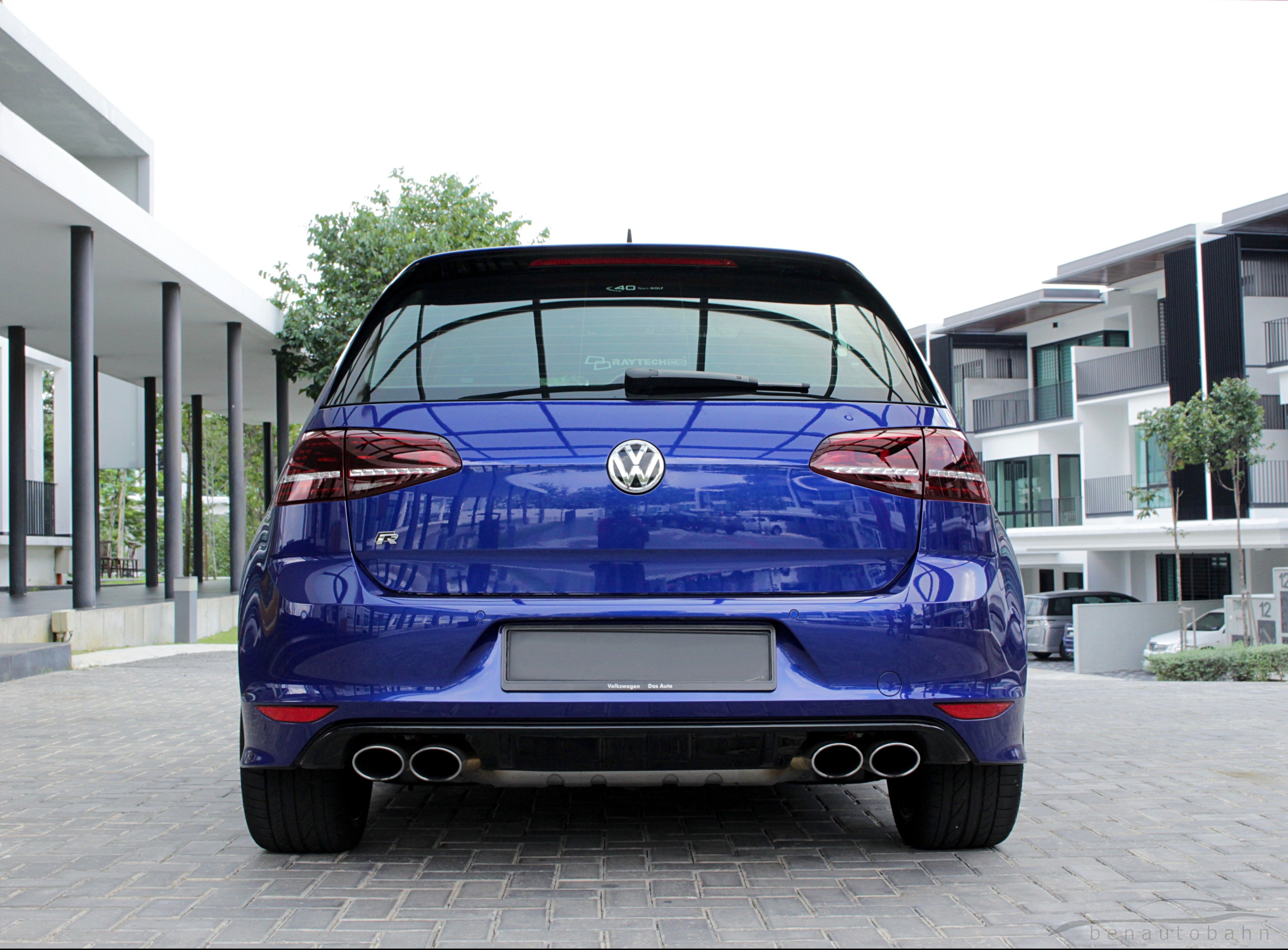 The one thing that really differentiates the Golf R from its other French (Renault Megane RS), American (Ford Focus RS) and German rivals (Mercedes – AMG A45), is how low profile it looks. Especially compared to the Focus RS and A45, the Golf R has a sense of refined, modern style to the exterior, compared to the overly done Ford and Mercedes (especially the oversized rear wing on the A45), which makes the Golf R the best looking among the lot, right next to its sister car – the Audi S3, to this writer’s eyes. However, style is a subjective thing, and none of the competition look terribly bad anyway. Hence, there’s no champ here for this comparison.
The one thing that really differentiates the Golf R from its other French (Renault Megane RS), American (Ford Focus RS) and German rivals (Mercedes – AMG A45), is how low profile it looks. Especially compared to the Focus RS and A45, the Golf R has a sense of refined, modern style to the exterior, compared to the overly done Ford and Mercedes (especially the oversized rear wing on the A45), which makes the Golf R the best looking among the lot, right next to its sister car – the Audi S3, to this writer’s eyes. However, style is a subjective thing, and none of the competition look terribly bad anyway. Hence, there’s no champ here for this comparison.

Interior is where you’d realise the difference. Despite being a “people’s car”, the Golf R feels very well-built and properly premium – compared to the ageing Renault. The Focus RS’ interior is pretty much similar to the regular Focus and Focus ST, this would again make the Golf R sit on top of the pile with the Audi S3 for this writer, which just tops the good-design-but-could-be-better Mercedes – AMG A45’s interior.
The Golf R genuinely feels spacious enough in the rear, and you could actually do road trips with 4 people and their weekend luggage with comfort, something that isn’t too easy in the A45 due to its sloping roof. Seats are well designed in the Golf R, supporting you in all the right places, and the driver also gets a 12-way powered seat, though without memory functions – which is a surprise at this price point, though the leather used could be improved as they felt more like leatherette and weren’t too breathable, making them not too comfortable after being parked in the heat.

You do get a lot of equipment as standard in the Golf R 3 and 5 door. The base model being the 3 door featuring the 6 speed DSG transmission, 4MOTION All Wheel Drive, eco start & stop system, Composition Media system with 8 speakers, faux carbon fibre trimmings, Climatronic dual zone air-conditioning with seat heating, electric park brake and auto hold, cooled glovebox, interior ambient lighting, colour multifunction display with lap timer, progressive steering (variable ratio steering), paddle shifters with leather wrapped steering wheel, and Alcantara seats.
You also get as standard, 18” Cadiz wheels, bi xenon headlights with adaptive front lighting, LED tail lights and quad tailpipes. Safety across the board is standard as well, with the advanced electronic differential (XDS+), ABS, burglar alarm, 6 airbags, ESP, whiplash reducing front seats, tyre pressure monitoring system and wheel locks.

The 5 door gains more equipment, featuring the 12 way powered driver’s seat, rear air-conditioning vents, auto dimming rear view mirror, automatic lights and wipers, 19” Cadiz wheels, cruise control, Discover Pro system with navigation, DCC Dynamic Chassis Control, ECO mode, electrically adjustable, heated, foldable and dimming side mirrors, panoramic sunroof, KESSY keyless entry and start, parking sensors (front and rear), reversing camera, space saver spare wheel and Vienna leather seats.
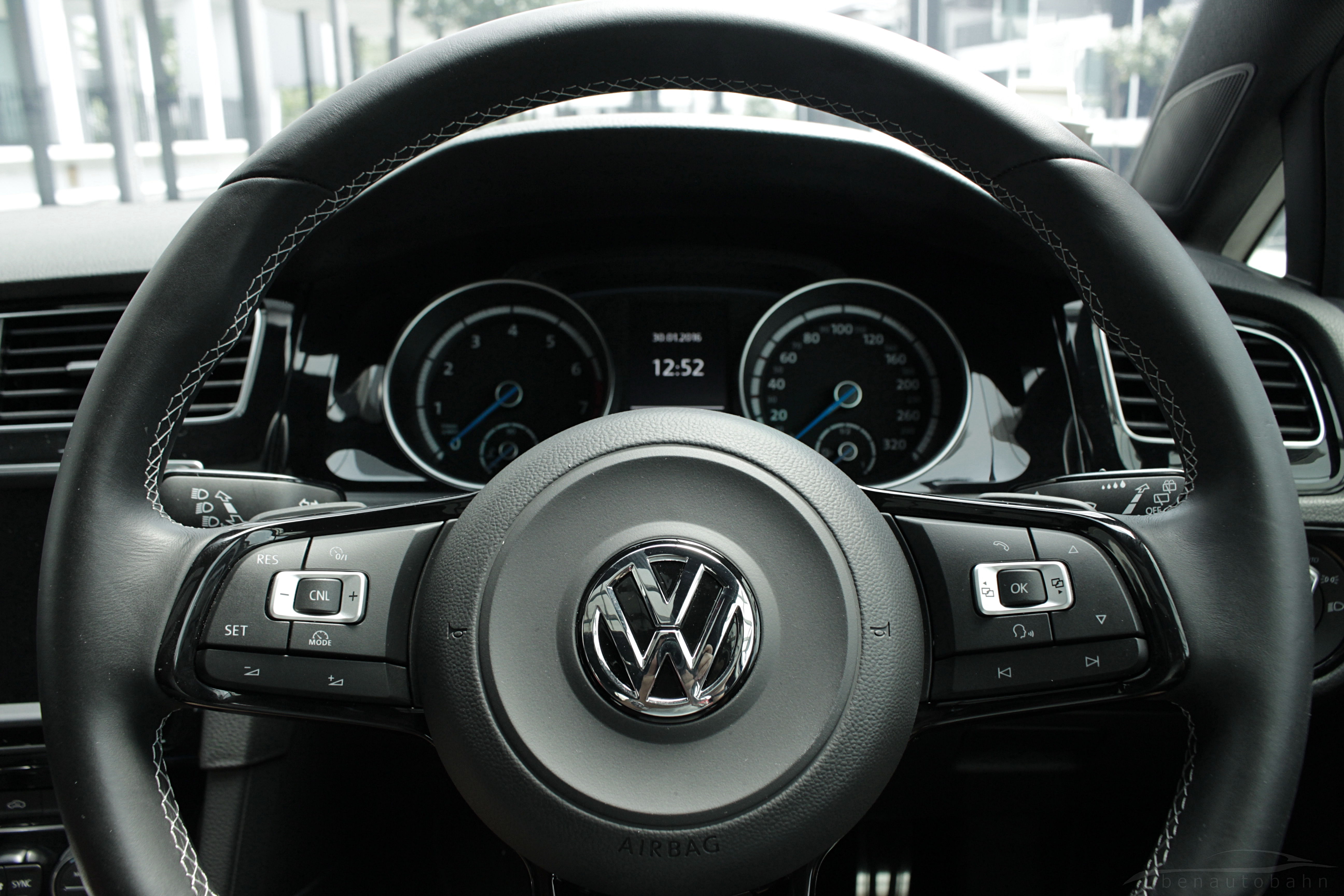
If you have experienced a standard Golf TSI from this generation, there isn’t anything particularly different in terms of getting in and getting comfortable in this new R. Being a Golf (and a VW), the interior is very well laid out, everything somehow just falls into place. There aren’t many cars that can do this, but the Golf does, and it does it so well.
The main difference in terms of the interior of the R over the GTI or the TSI is the inclusion of the bigger 8” Discover Nav Pro system, which actually fills out the centre stack very well. The new generation Discover and Composition Media touchscreen systems are known to be much better visually in comparison to their outgoing predecessors like the RNS 510 and the likes, and we can confirm this is indeed true.

Touch response is good, and in general the system is well laid out and feels decent. It is no Tesla Model S or BMW 7 series (G11 with the new iDrive 5.0), but the navigation system is definitely one of the better ones out there. Technology wise, there is nothing that strikes as really high-tech in the navigation system though – there is no app support, nor is there support for Apple CarPlay and Android Auto though VW is releasing the CarPlay and Android Auto support as part of their Mk7.5 Golf range that will be coming soon. Sound wise, there’s nothing very notable, again, it works decently enough but it will not be satisfying the audiophiles in the room.

We now come back to the most important part – what is it actually like to drive a 276 hp hatchback?
For a start, it feels normal, in a good way.
Around town, the Golf R feels like any other Golf. It’s so refined, and rather smooth to drive around town, thanks to the 6 speed wet clutch DSG instead of the 7 speed dry clutch DSG found in the 1.4 TSi. Despite the track focussed nature of the car, it rides very well in town considering its intended function – which indeed is a revelation considering the Mercedes-AMG A45 crashes over lumps and bumps on the roads.
Part of it is helped by the DCC Dynamic Chassis Control in the 5 door that adapts the suspension based on the conditions. Visibility is great all around and the parking camera does help when navigating into tight spaces, which is so user-friendly making one feel confident driving it.

On the open road, the Golf R does transform from a great city hatchback to a true autobahn-stormer. The regular Golf and the GTI were already fundamentally well sorted cars, thanks to the fantastic MQB chassis. But the Golf R makes it even better, starting with the DCC Dynamic Chassis Control system. The good ride comfort in the city doesn’t lead to the Golf having a floaty ride at speed. Placing the DCC into the sportier modes leads to an even better high-speed ride on smooth highways, improving driver confidence.
When the roads get curvy, that’s when the XDS+ electronic differential system is really well sorted, it just works. Giving you the confidence that you will make it out of that corner as you expected despite unexpected conditions on the other side. The 4MOTION all wheel drive also helps as well, working in the background and giving added confidence despite adverse weather.

As much as the Golf R is close to perfect, it is not quite. For the Golf R specifically, the turbo lag is a bit more noticeable than say, the regular 2.0TSI engine used in things like the GTI. There appears to be some form of a dead zone in the initial tip in but once the turbo has spooled up, it is fine. It was not as bad as say the Ford 2.0 EcoBoost engine which is used in the Focus ST, Range Rover Evoque Si4, Ford Mondeo and the likes – but you would have expected VW to have tried to make it as smooth as possible considering BMW has nailed it in their new generation 2.0 turbo 4 cylinder engine (B48, as seen in the 330i). Though that does fall on the lower end of the 250-300 hp, 2.0 litre engine spectrum.
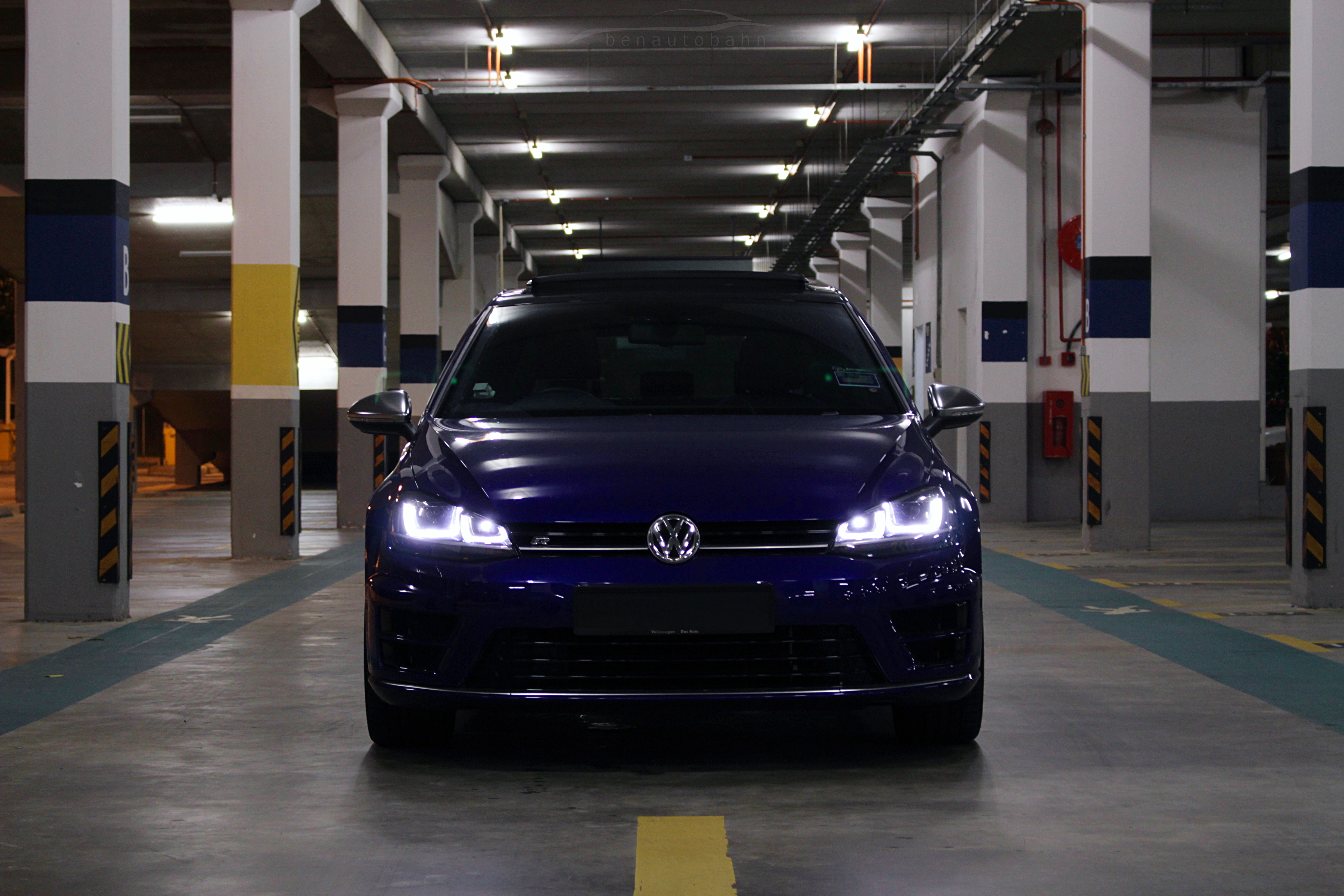
The good thing is that like the cars with the Ford 2.0 EcoBoost, you actually get used to it quite quickly, and learn to instinctively compensate for it. Perhaps the most infuriating thing that really bugged me driving the Golf R had to be the Soundaktor system. If it had been a personal car and I was out of warranty (disclaimer: we don’t recommend messing around with wiring and the car’s software especially if you aren’t too sure and you are still under warranty), I would have gone ahead and pulled the Soundaktor cable out.
It makes a burbly, bassy noise at the low-end, which might sound like a good idea in theory, it is just horridly annoying in practise. Sure, it seems cool on the first day but honestly, the novelty wore out quickly, especially when you are driving around in the city when you are stopping/slowing down and speeding up again. Honestly, on the outside, the car sounds fine – which is a shame that VW actually resorted to doing this.
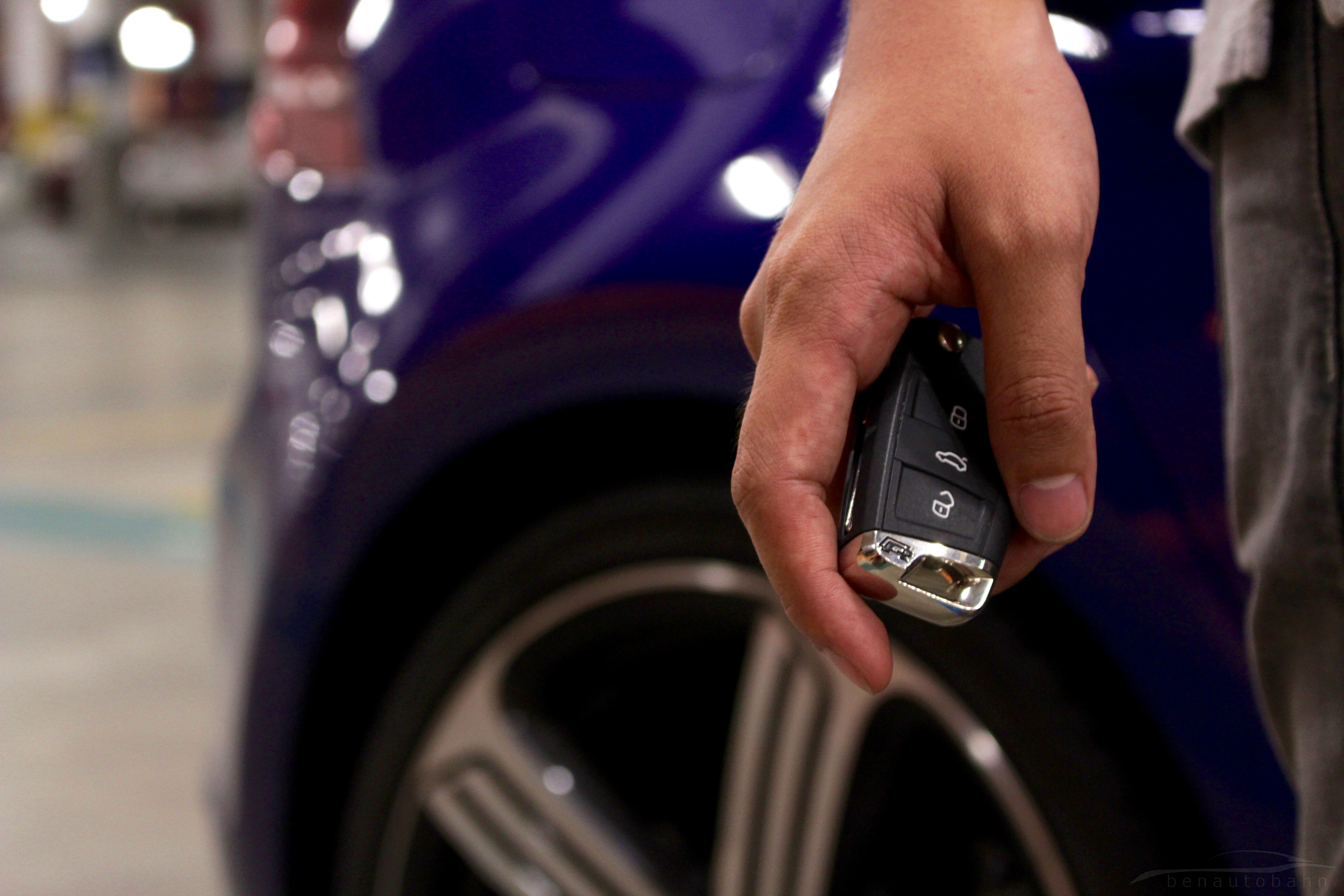
It sure has been a journey over the last 40-odd years for the Golf. The Mk7 Golf R is a tribute to just what VW is capable of doing and boy have they done it. It is often hard to come across a car that is near perfect in every possible way, but the Golf R really nails the brief. It’s competitors are flawed in some way or other, and until (and if) the Focus RS arrives on our shores, it will be a while before we see another super-hatch that would be able to challenge the practicality, performance and value the Golf R Mk7 has to offer.
Now if only they did a diesel version of the Golf R just like how there is the Golf GTD…
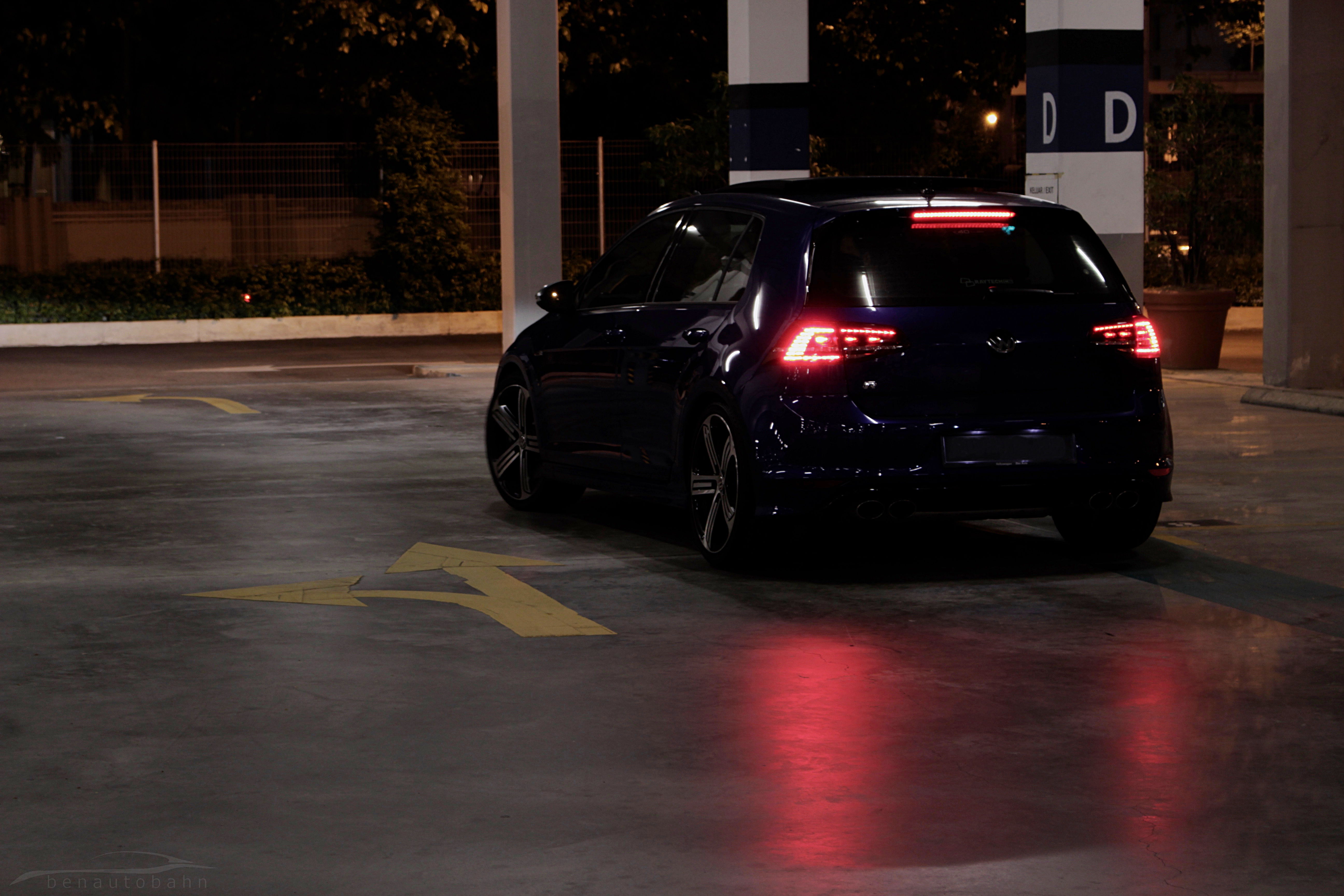
Story & Photos by Kapil Haresh

